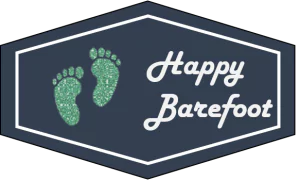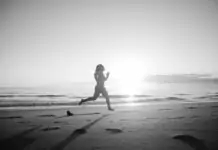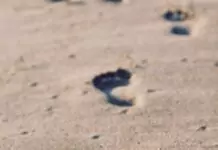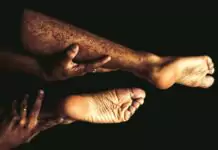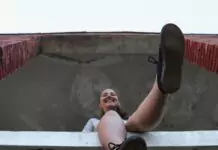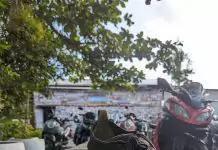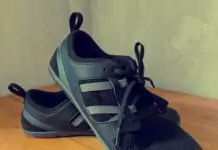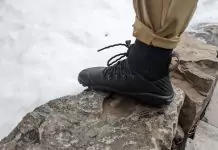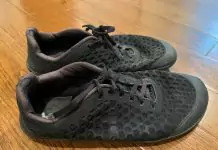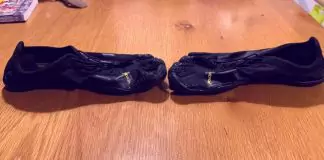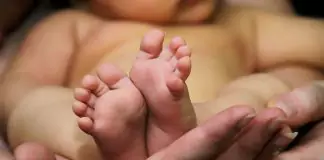Humans have been walking and running without shoes for millions of years, just like other animals. Therefore, the soles of our feet were the only direct contact between our bodies and the ground when walking and running. Then humans invented footwear like sandals and moccasins about 40,000 years ago. But lately, barefoot running has gained huge popularity due to claims of injury prevention, improved running efficiency, and performance. People who promote barefoot running suggest that humans should run barefoot as our predecessors did thousands of years ago. The development of “minimalist” footwear has developed with barefoot running movement as a way to imitate barefoot running yet offer foot protection. Whether it’s best to go shoed or shoe-less still remains one of the most fervently contested topics. In spite of the fact that we know little scientifically about barefoot running, many diverse opinions have been expressed on the topic.
Why you should be cautious when going barefoot?
Shoes, in general, protect us from any road debris such as sharp glasses, broken sticks, rocks or thistles. They additionally offer protection from cold or hot weather and snow. For some people, the plantar aspect, which is the bottom of the feet is very soft. So, going shoe-less may initially cause plantar pain, or in those susceptible, increase the risk of plantar pain.
You need to be careful where you step because some plants like nettle, thistle and poison oak can result in painful wounds such as lacerations, punctures, and other open wounds. For instance, spiky plants gash your skin and can leave fragments beneath the skin. Not only plants which you need to be aware of but also creatures that may sting or chomp in your foot like scorpions, snakes or ants.

Barefoot Calluses formation on the soles of feet which are thickened areas of the keratinized outer layer of the epidermis that normally form in humans and other animals when the skin is exposed to frequent friction and pressure and that can be annoying for some people due to cracking and splitting of callus which can be painful.

It’s not like these risks are just waiting for you around to corner to jump on you the moment you take off your shoes. But it’s defiantly advised to be smart, and look around before taking off your shoes if this is a new place that isn’t familiar to your bare feet.
Other possible effects in transitioning from normal shoes to minimal or barefoot alike shoes?
Nearly everybody who changes to a minimalist shoe or begins going shoeless will end up having blisters for the first couple of weeks because the transition from running shoes to shoe-less is a gradual adaptation. It takes time to build tough enough skin, at list a few weeks till it starts to have some good resistance to natural ground. And barefoot running blisters may be part of that process. So, take it easy, and pay extra attention to what your body feels and try to tell you.
Since most people are not used to run barefoot, the muscles will at first feel exhausted. The lower your heels are to the ground, the more your Achilles tendon will need to work. To fast of a transition may cause injuries such as Achilles tendonitis or calf strain. Again, take it easy and listen to your body.
How does barefoot running affect our bodies in a good way?

In a new study conducted by Harvard, Chemnitz University (Germany) and Moi University (Kenya), which was published a month ago, a group of international researchers found that foot callus gives us better protection than shoes. Actually, they say, shoes have actually desensitized our feet, while changing the way we walk. And over time, that has drastically changed the human gait.
Holowka who is a biological anthropologist at Harvard University says “These barefoot running calluses do something that our footwear can’t. They protect our feet, but allow us to feel the ground,”
Also in the same research, Lieberman is an evolutionary biologist who says “Callus thickness does not trade-off protection, measured as hardness and stiffness, for the ability to perceive tactile stimuli at frequencies experienced during walking. Additionally, unlike cushioned footwear, callus thickness does not affect how hard the feet strike the ground during walking, as indicated by impact forces.”

Lieberman and his colleagues think that this might help elderly people who have trouble maintaining balance. Because whether you have a thin or thick callus on your soles, you still feel the ground and then transmit information to your brain, unlike shoes. So, barefoot or minimalist shoes could prevent serious injuries for elderly people. Lieberman explains. “If your feet can’t sense what’s going on on the ground, maybe you’re more susceptible and more vulnerable [to falls], and shoes may be a part of that,” he says. “If we can give people’s brains, their reflexes, more information that might help them.”
Moreover, running with little or no support can help to reinforce your muscles, tendons, and ligaments of the foot and you may build up a more natural walk. When running barefoot you let parts of your body like the Achilles tendon and calf muscles to be stronger so, you will prevent kinds of injuries that mostly happen to runners. It also develops a mid-foot or forefoot landing rather than heel striking which results from the excessive cushion of normal running shoes when your feet land in front of your hips. Landing with your front part of your foot allows your arches to work as shock absorbers.
Running with barefoot or with barefoot alike shoes improves balance because not only the muscles of your feet are activated but those in the ankles and lower legs. It can also result in better circulation, “which increases the nourishment of nerves, muscles, and bones of the foot and also helps minimize swelling of the lower extremities.
Additionally, there is nothing more unhygienic than a foot inside a shoe. Shoes track in more bacteria and dirt than a barefoot will. (William Rossi, D.P.M., former podiatrist and currently a consultant to the footwear industry)
On top of everything, going barefoot can prevent an athlete’s foot which is a very painful and common skin condition that is caused by fungus and since fungus lives in a dark wet place so, your toes are vulnerable when wearing socks and shoes for the entire day. Exposing the feet to sun and air by going barefoot instead of wearing shoes all summer can prevent an athlete’s foot. infection. But, you need to keep in mind that you can catch athlete’s foot in public places like public bathrooms or changing rooms.
Conclusion
Having your feet free of binding, hot, sweat-soaked shoes, open to the air and daylight, ready to feel the different surfaces and temperatures of surfaces as you walk, is such a great feeling.

It’s true that going barefoot while walking and running have some cons but the risk of damage is not big like some people imagine. In fact, the damage is almost non-existent as long as you follow the safety precautions and engage in moderation.
Take time to stop and appreciate all that is about you. Smell the earth, the trees, and the leaves. Absorb their energies and send them yours. One of the contributing factors of our isolation from the rest of nature is the insulation of our shoes. Whenever you can, go barefoot. Make contact with the earth. Feel it; absorb it. Show your respect and love for nature and live with nature. (Buckland’s Complete Book of Witchcraft, Raymond Buckland)
In the end, you are the one who should decide If barefoot walking is the right choice for you.
References
- https://www.nature.com/articles/s41586-019-1345-6
- https://scholar.harvard.edu/files/dlieberman/files/2012c.pdf
